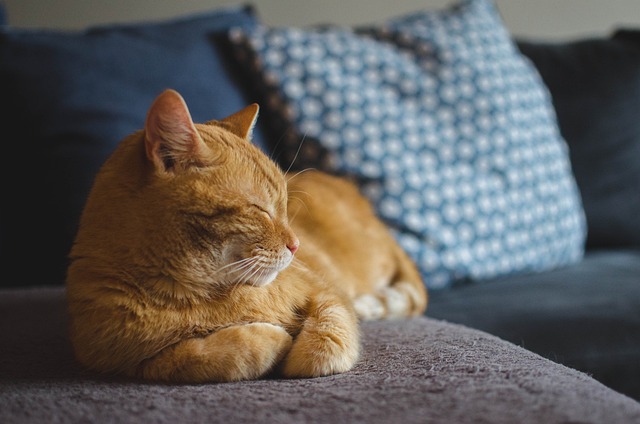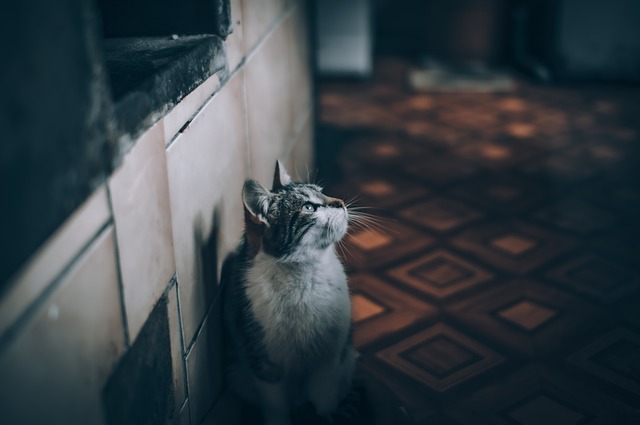To get a hypoallergenic cat, consider breeds like the Balinese, Russian Blue, or Sphynx. These cats produce fewer allergens and may be better suited for allergy sufferers.
When choosing a hypoallergenic cat, research the specific breed’s characteristics, visit breeders or shelters to interact with the cats, and consider consulting an allergist to determine the best fit for your allergies. Understanding the factors that contribute to cat allergies and selecting a compatible breed can help minimize allergic reactions and allow you to enjoy the companionship of a feline friend without discomfort.
The Journey For A Sneeze free Companion

Searching for a furry friend without the sneeze-inducing aftermath? The journey for a sneeze free companion leads many allergy sufferers to hypoallergenic cats. These feline companions are renowned for their potential to minimize allergic reactions, offering a glimmer of hope to those longing for the company of a cat without the allergy symptoms.
The Appeal Of Hypoallergenic Cats
Hypoallergenic cats are often sought after for their potential to reduce allergic reactions in sensitive individuals. Their low-shedding coats and reduced production of allergenic proteins make them an attractive option for those with allergies, allowing them to enjoy the companionship of a feline friend without the usual discomfort.
Myth Vs. Reality: Do Hypoallergenic Cats Exist?
There is a common misconception surrounding hypoallergenic cats and their ability to eliminate allergic reactions. While these cats may produce fewer allergens, it’s important to acknowledge that no cat breed is entirely hypoallergenic. The extent to which an individual will experience allergy symptoms can vary depending on their sensitivity and the specific cat.
Allergies And Felines: The Science
Find the science behind hypoallergenic cats and how to find the perfect feline companion for allergy sufferers. Learn about specific cat breeds with lower allergen levels to create a comfortable and sneeze-free environment at home.
Understanding Cat Allergies
Cat allergies are caused by a protein found in a cat’s skin cells, saliva, and urine. When exposed to these proteins, the immune system reacts by releasing histamines, triggering allergic symptoms. Understanding these allergens is crucial for managing cat allergies.
Major Allergens In Cats
The primary allergen in cats is a protein called Fel d 1, which is produced in the sebaceous glands of the skin. This protein is transferred to the cat’s fur during grooming and can become airborne when the cat sheds. Other allergens include Fel d 4 found in cat saliva and Fel d 2 found in cat urine.
Breeds With A Hypoallergenic Edge

When it comes to finding a feline friend that won’t trigger your allergies, certain breeds have a hypoallergenic edge. These cats produce fewer allergens, making them a great choice for allergy sufferers who still want to enjoy the company of a pet. Let’s explore the popular hypoallergenic cat breeds and the characteristics that make them a low-allergen option.
Popular Hypoallergenic Cat Breeds
If you’re in the market for a hypoallergenic cat, consider these popular breeds:
- Russian Blue
- Siberian
- Bengal
- Balinese
- Siamese
Characteristics Of Low-allergen Cats
Low-allergen cats typically have certain characteristics that make them a suitable choice for allergy sufferers. These include:
- Minimal shedding
- Low dander production
- Less saliva production
Before You Adopt: Considerations
Assessing Your Allergy Severity
Understand your allergies through testing to determine if you can tolerate a hypoallergenic cat.
Lifestyle Adjustments For Living With Cats
- Implement a regular grooming routine to reduce allergens on the cat’s fur.
- Invest in an air purifier to cleanse the air of dander and other allergens.
- Keep your home clean and vacuum frequently to minimize allergen exposure.
Finding Your Feline Match
Where To Find Hypoallergenic Cats
Consider reputable breeders or animal shelters specializing in hypoallergenic cat breeds.
The Adoption Process
- Research different hypoallergenic cat breeds to find your perfect match.
- Visit local shelters or breeders to meet the cats in person.
- Ask about the cat’s health history and any specific care requirements.
- Complete the adoption process, ensuring you are ready to provide a loving home.
Preparing Your Home

Before bringing a hypoallergenic cat into your home, it’s essential to make some adjustments to create an environment that minimizes allergens. By taking proactive steps, you can help reduce the risk of allergic reactions and ensure a comfortable living space for both you and your new feline companion.
Creating An Allergen-reduced Environment
When preparing your home for a hypoallergenic cat, it’s important to focus on creating an environment that minimizes allergens. Some key steps to consider include:
- Opt for hardwood or tile flooring instead of carpet, as these surfaces are easier to clean and less likely to trap allergens.
- Invest in allergen-proof covers for mattresses, pillows, and upholstery to reduce exposure to pet dander.
- Use high-efficiency particulate air (HEPA) filters in your HVAC system to capture airborne allergens.
- Limit the use of curtains and opt for blinds that can be easily wiped down to remove allergens.
Cleaning Tips For Allergen Control
Regular and thorough cleaning is crucial for maintaining an allergen-reduced environment. Consider the following cleaning tips to help control allergens in your home:
- Regularly vacuum and dust your home using a HEPA-filtered vacuum cleaner and damp cloth to trap and remove pet dander and other allergens.
- Wash your cat’s bedding and toys frequently to minimize the build-up of allergens.
- Use a microfibre cloth to wipe down surfaces, as it effectively captures and removes pet dander and other allergens.
- Keep your cat groomed and brushed regularly to reduce shedding and the spread of dander throughout your home.
Life With Your Hypoallergenic Cat
Life with Your Hypoallergenic Cat can be enjoyable with proper care and attention.
Daily Grooming To Minimize Allergens
- Regular brushing and grooming can reduce dander levels.
- Use a damp cloth to wipe your cat’s fur daily.
- Vacuum and dust your home frequently to remove allergens.
Diet And Health Considerations
- Feed your cat a high-quality diet to support their overall health.
- Ensure your cat stays hydrated by providing fresh water daily.
- Regular vet check-ups can help monitor your cat’s health.
Medical Interventions And Alternatives
Looking for a hypoallergenic cat? Consider medical interventions and alternatives. Some breeds, like the Sphynx and Russian Blue, produce fewer allergens, making them a good choice for allergy sufferers. Regular grooming and keeping a clean home can also help reduce allergens.
Medical interventions and alternatives for managing cat allergies can provide relief to cat owners who are sensitive to pet dander. Allergy treatments for cat owners can range from over-the-counter medications to non-pharmaceutical options. It’s important to consider various approaches to find the best solution for your individual needs.
Considering non-pharmaceutical options can be beneficial for those who prefer natural remedies or want to minimize the use of medication. Some cat owners have found relief through alternative therapies and lifestyle adjustments. Here are some non-pharmaceutical options to consider:
Allergy treatments for cat owners
— Over-the-counter antihistamines
— Prescription nasal sprays
— Allergy shoots (immunotherapy)
Considering non-pharmaceutical options
— Air purifiers
— HEPA filters
— Regular grooming and bathing for the cat
— Using hypoallergenic bedding for the cat
— Reducing exposure to other allergens in the home
By exploring these medical interventions and alternatives, cat owners can find effective ways to manage their allergies and enjoy the companionship of a hypoallergenic cat.
Success Stories
Are you one of those individuals who adore cats but cannot adopt one due to allergies? Well, hypoallergenic cats might be the solution for you. Hypoallergenic cats are a great option for cat lovers who are allergic to felines but want to enjoy the companionship and love of a cat. These cats produce fewer allergens than other cats, making them an ideal pet for those who suffer from allergies. Here are some success stories and testimonials from hypoallergenic cat owners:
Testimonials From Hypoallergenic Cat Owners
“I have always wanted a cat, but my allergies wouldn’t allow it. However, when I discovered the hypoallergenic Siberian cat breed, my life changed. I adopted a Siberian kitten, and I have never had an allergic reaction. I am so grateful to have my furry companion,” says Sarah, a Siberian cat owner.
“After years of living without a cat, I discovered the Sphynx breed, which is hypoallergenic. I decided to adopt a Sphynx kitten, and I couldn’t be happier. My allergies have not acted up once, and I have a loving companion who follows me everywhere,” says John, a Sphynx cat owner.
The Emotional Benefits Of Pet Companionship
While hypoallergenic cats can help alleviate allergy symptoms, they also provide emotional benefits. According to research, pet owners have lower stress levels and reduced anxiety and depression symptoms. Pets offer unconditional love and support, which can improve mental health and overall well-being. Adopting a hypoallergenic cat can provide the same emotional benefits as any other cat breed.
In conclusion, adopting a hypoallergenic cat can be life-changing for cat lovers who suffer from allergies. The success stories and emotional benefits of pet companionship prove that hypoallergenic cats can be an excellent addition to any household. Consider adopting a hypoallergenic cat and experience the joy of having a furry companion.
Frequently Asked Questions
How To Make A Cat Hypoallergenic?
To make a cat hypoallergenic, groom them regularly, keep their environment clean, use hypoallergenic products, and consider getting a hypoallergenic cat breed. Regular grooming removes allergens and reduces shedding, while a clean environment helps minimize allergen exposure. Certain cat breeds produce fewer allergens, making them a better choice for allergy sufferers.
How Much Does A Hypoallergenic Cat Cost?
The cost of a hypoallergenic cat can range from $200 to $2,000, depending on breed and breeder.
What Is The #1 Most Hypoallergenic Cat?
The Sphynx cat is considered the most hypoallergenic cat breed due to their lack of fur. They produce less dander than other cats, which can reduce allergic reactions in humans.
Can Cats Be 100% Hypoallergenic?
No, cats cannot be 100% hypoallergenic. While some breeds are less allergenic, no cat breed is completely hypoallergenic. All cats produce allergens, including saliva, dander, and urine, which can trigger allergic reactions in some people. Regular grooming and cleaning can help reduce allergens.
To sum up, getting a hypoallergenic cat involves research, choosing the right breed, and proper care. By understanding your allergies and selecting a suitable cat, you can enjoy the companionship of a feline friend without the discomfort. With these tips, you can find the perfect hypoallergenic cat for your home.
